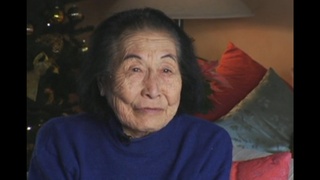Interviews
Introduction to Jazz
And that was that, but about that time, been hearing music over the radio. I'd hear, once in a while Benny Goodman, and it was kind of new. But it's kind of so, sounded so neat to me, and it turned out to be -- turned out to be someone who played swing music. I don't know about the word "jazz," but it was, and especially I heard something, a quartet by Benny Goodman with Lionel Hampton on the vibes, Teddy Wilson on piano, Gene Krupa. That really moved me like, hey, this is neat. Isn't this neat?
It just moved me so much that I went to the music store and bought some wire brushes that, brushes used to play on the snare drum, and just found me a little box. And I'd just play on it with Benny Goodman. That was so cool. [Laughs] And I'd play up loud, right, and Mom would say, "Hey, cut it out, Joji. Yakamashii." So noisy. "Okay, Mom, okay, Mom." And I really enjoyed that. That was my introduction to jazz again, and that really started something that lasted the rest of my life until today.
Date: February 18, 2002
Location: Washington, US
Interviewer: Alice Ito, John Pai
Contributed by: Denshō: The Japanese American Legacy Project.







